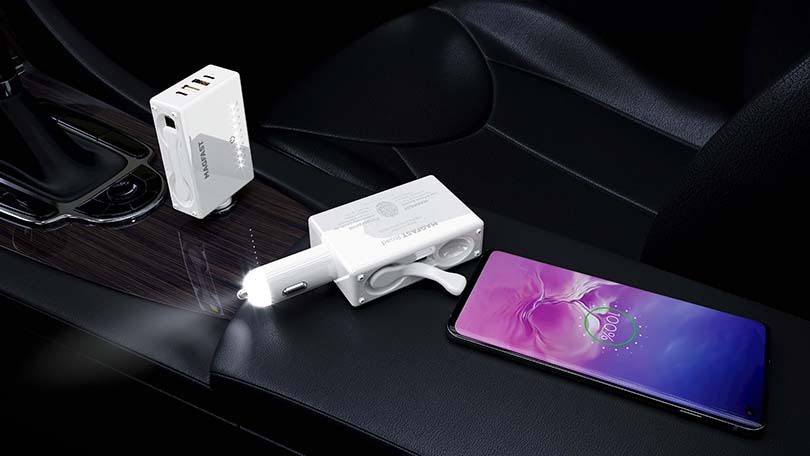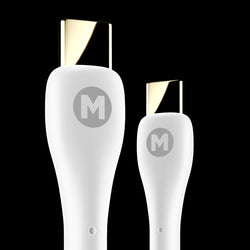
Life on the Road: How Tech Is Improving Connectivity
If you spend a lot of time on the road, you’ll likely rely on technology to keep you connected, whether that’s for your job or with your family back home. Thanks to technological advances over the past few decades, being able to stay connected even when you’re on the road is now easier than ever, with super-fast mobile networks and devices.
Here, we look into the history of mobile technology and how the latest developments and innovations are helping us to improve connectivity.
The History of Mobile Technology
Mobile technology has come a long way since the first mobile phones were installed in cars 75 years ago. The first mobile phone call was made in St Louis in 1946, using a phone built-in to a car’s dashboard. At the time, service was only available in major cities and connecting highways and was used primarily by companies, like utilities and truck drivers, rather than individuals. The phone weighed about 80 pounds and most of the equipment would fill up the trunk of the car. It was powered by the car’s battery and used so much power, the headlights would dim! The mobile phone system could only handle a small number of calls at a time due to a limited number of radio frequencies, and by 1948 the service had just 5,000 subscribers.
Cellular Service
Cellular telephone service was conceived in 1947 but the technology was not available at that time to make it a reality. After decades of development, the first handheld mobile phone call was finally made in 1973, although widespread cellular service wasn’t implemented until 1983.
The next year, Motorola launched the DynaTAC, a handheld mobile phone known as ‘The Brick’ due to its shape and the fact it weighed two pounds. It provided around thirty minutes of talk time per charge but took ten hours to reach a full charge. DynaTAC cost $3,995 – over $10,500 in today’s money – and so was not widely used. Throughout the 1980s, the car phone remained more popular than the handheld mobile phone, due to the convenience of using the car battery for power and because it was more affordable at around $1,399 (about $3,100 in today’s money). However, in the 1990s, lighter and cheaper handheld mobile phones became available with smaller, more efficient batteries. As handheld phones increased in popularity and hands-free technology was developed to use mobiles in cars, built-in car phones became less and less widespread.
Technology On the Road Now
Now, we have a whole host of technical gadgets to keep us connected on the road. Not only are our devices more advanced, but the mobile networks we use have also vastly improved from the first networks in the 20th century.
5G
Those on the road are now able to keep better connected through phone calls and internet access made through the high-speed 5G network, the fifth-generation global mobile network after the first generation was implemented in the 1980s. 5G is designed to be faster and more reliable, with extended capacity and ultra-low latency. It uses the same mobile networking principles of 4G, but it also utilizes New Radio air interface to enhance capacity. At its peak, 5G can deliver rates up to 20 Gbps, ten times faster than 4G.
Over the next year, 5G is expected to become more widely used and will soon be adopted as the standard for mobile networks, one day making 4G and 3G as redundant as 1G and 2G are now.
Bluetooth
After the first Bluetooth device was launched in 1999, we have since seen many accessories implement the technology, proving to be particularly useful to those who travel a lot. Through Bluetooth, we can exchange data through devices over short distances. Accessories like hands-free kits for mobile phones use Bluetooth so people can communicate through a car’s speakers and a phone’s microphone, keeping them connected but also safe whilst driving. Many modern cars will often now have Bluetooth built-in, so drivers can automatically connect their devices to speak on the phone and play music through the car’s speakers.
Using a combination of Bluetooth, 5G and the latest devices and accessories, those on the road have seen huge improvements in connectivity. There has never been a time where it has been easier to keep in touch with colleagues, friends and families, with instant communication always at our fingertips.
Charging On the Road
With all these innovations in mobile technology, it’s more vital than ever that our devices remain powered up and ready to use, whenever and wherever we are. So, at MAGFAST, we’ve made sure that mobile charging works efficiently even when you’re on the road, with MAGFAST Road. Road plugs into your 12v car input to give you a charger able to power up to five devices at once. The charger is small but sturdy, powerful enough to keep your devices charged and strong enough to withstand day-to-day life in your car. Plus, it features a super-bright LED flashlight on the end, making it versatile and practical in emergencies.
Road works both plugged into your car and also on the go, acting as a mobile powerbank when you’re out and about. When it’s plugged in, it uses power from your car to charge your devices and also its own internal battery, so you can take it out when needed and it will be fully charged to use as a mobile powerbank or flashlight.
Like every MAGFAST charger, it features our ‘snap-to-charge’ technology, so you can charge another MAGFAST device whilst you’re on the go. The magnets are also super handy if you’re in a bind and need to use the flashlight to check your engine – just snap Road to the hood of your car so you can inspect the engine using the LED flashlight.
Charging On the Road FAQs
Does charging my phone in the car drain the car battery?
No, charging your phone in the car won’t drain your car’s battery. When you charge your phone when driving, the car battery is always being charged, so there’s no danger of your phone charger using all the power. Many cars are designed to also shut off power to the outlets when the car is switched off, and so even if your device is still plugged in to Road when the car is off, it won’t drain the battery. If your car is not designed in this way and outlets still work with the car off, Road will only use minimal power from the car’s battery, and so it is still unlikely to completely drain it.
Will charging my phone in the car damage the phone battery?
No, as long as you use a reliable car phone charger, you will not damage your phone by charging it in the car. Whilst you’ll probably be plugging your charger into the car’s 12v outlet, most smartphones will use around 5v when charging. The charger itself will be designed to adapt the voltage to the right amount for your device, so it won’t receive too much power.
MAGFAST Road is our premium car phone charger, designed to be plugged into your 12v car outlet and also to be used as a portable powerbank. We use the latest charging technology to ensure your devices are charged efficiently and safely, using only the maximum amount of power that’s safe for your devices.
How do I make my phone charge faster in the car?
If your car has a built-in USB port, you’ll likely find that charging is very slow. Instead, you should use a premium, purpose-built car charger, like MAGFAST Road. MAGFAST Road uses the latest fast charging technology and adapts the power through your car’s 12v outlet, to ensure your devices are charged quickly and efficiently.
What’s the best phone car charger?
The best phone car charger will feature the latest in charging technology for unbeatable performance, ultra-reliability and versatility. The best phone car charger is MAGFAST Road. With MAGFAST Road, you can charge up to five devices at once, either using the car’s 12v outlet or using Road as a portable power bank. Not only is it super versatile for keeping your devices charged, it’s also easy to keep charged, through the 12v outlet, using a USB-C cable, a micro-USB cable, or with our ‘snap-to-charge’ technology and any other MAGFAST charger.
America's highest-rated smart phone cable ...



